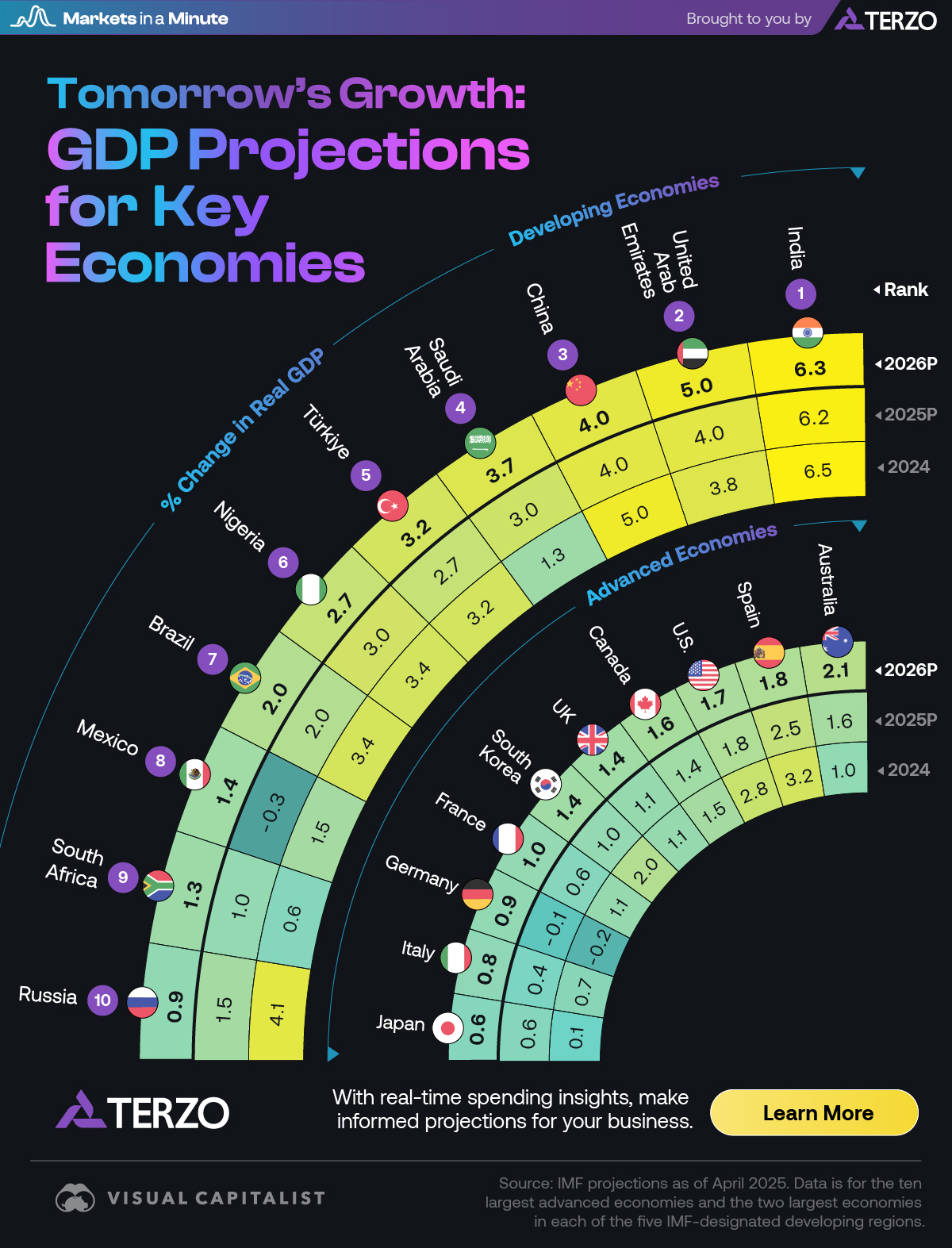Report on United States Tariff Policy and Sustainable Development Goal Implications
Introduction
This report analyzes the economic and trade policy announcements made by United States Commerce Secretary Howard Lutnick. The focus is on the implications of proposed tariffs for key United-Nations Sustainable Development Goals (SDGs), particularly SDG 8 (Decent Work and Economic Growth), SDG 10 (Reduced Inequalities), and SDG 17 (Partnerships for the Goals).
Economic Projections and Alignment with SDG 8: Decent Work and Economic Growth
The administration’s tariff strategy is primarily justified as a mechanism to stimulate domestic economic activity, directly engaging with the objectives of SDG 8.
Administration’s Growth Forecasts
- Commerce Secretary Lutnick projects that the new tariff measures will drive Gross Domestic Product (GDP) growth by as much as 1.5 percent.
- The policy is expected to generate between $300 and $400 billion in new export opportunities by compelling other nations to open their markets to U.S. goods.
- These outcomes are presented as contributing to SDG Target 8.1, which aims to sustain per capita economic growth.
Economic Concerns and Potential Risks to SDG 8
- Business and policy analysts express concern that the tariffs will lead to higher prices on imported goods.
- This price increase could spur inflation and dampen consumer spending, potentially undermining stable economic growth.
- Economist Peter Schiff noted that U.S. trade deficits have recently surged and exports have declined, challenging the premise that the tariffs are achieving their stated goals.
- Mark Zandi of Moody’s Analytics, while projecting significant tariff revenue, cautioned that its long-term stability is uncertain, depending on future legal and executive decisions.
Impact on Global Partnerships and Inequalities (SDG 17 & SDG 10)
The unilateral nature of the tariff policy and its differentiated application have significant consequences for international cooperation and global equity, central tenets of SDG 17 and SDG 10.
Renegotiation of Global Trade Agreements
The administration plans to renegotiate major trade deals, which could alter the landscape of international cooperation.
- United States-Mexico-Canada Agreement (USMCA): A renegotiation is planned to begin within a year, with the stated aim of protecting American manufacturing jobs, particularly in the automotive sector. This aligns with SDG 9 (Industry, Innovation, and Infrastructure) but may create friction with global partners.
- European Union (EU): Despite EU threats of retaliatory tariffs on $84 billion of U.S. goods, the Commerce Secretary expressed confidence that a deal would be reached, preventing an escalation that would run counter to SDG 17’s goal of a stable, rules-based multilateral trading system.
Implications for SDG 10: Reduced Inequalities
- The policy outlines a tiered tariff system that distinguishes between different economies.
- A baseline tariff of 10 percent is expected for developing nations, including those in Latin America, the Caribbean, and Africa.
- Larger economies will face a choice between opening their markets or paying higher tariffs. This approach has direct relevance to SDG Target 10.a, which calls for special and differential treatment for developing countries, though the impact could be punitive rather than preferential.
Policy Analysis and Forward-Looking Assessment
Domestic Monetary Policy and Economic Stability
- Secretary Lutnick criticized the Federal Reserve for maintaining high interest rates, claiming they inflict significant economic costs on the American public.
- This critique suggests a desire for domestic monetary policy to align more closely with the administration’s growth-focused trade strategy.
Future Outlook and SDG Considerations
- The full economic consequences of the tariff policies on trade balances, job growth, and consumer prices will become clearer in the coming months.
- The divergence between administration projections and external economic analysis highlights the uncertainty surrounding the policy’s ultimate impact on achieving sustainable and inclusive growth.
- The long-term effects on global partnerships (SDG 17) and international equity (SDG 10) will depend on the outcomes of forthcoming negotiations and the potential for retaliatory actions.
Analysis of SDGs, Targets, and Indicators
1. Which SDGs are addressed or connected to the issues highlighted in the article?
-
SDG 8: Decent Work and Economic Growth
The article is centered on economic policies, specifically tariffs, intended to stimulate economic growth. Commerce Secretary Howard Lutnick explicitly states the goal is to “drive as much as 1.5 percent gross domestic product (GDP) growth.” The discussion also revolves around creating export opportunities for American businesses and protecting domestic jobs, which are core components of SDG 8.
-
SDG 9: Industry, Innovation and Infrastructure
The article highlights a specific focus on protecting and promoting domestic industry. The intention to renegotiate the USMCA is justified by the desire to “protect American manufacturing jobs” and ensure products like cars “can be built in Michigan and Ohio.” This directly relates to the goal of promoting inclusive and sustainable industrialization.
-
SDG 10: Reduced Inequalities
The proposed tariff policy has direct implications for inequality between countries. The article mentions that “the small countries, the Latin American countries, the Caribbean countries, many countries in Africa, they will have a baseline tariff of 10 percent.” This policy affects developing nations’ ability to trade with the U.S., connecting it to the goal of reducing inequalities.
-
SDG 17: Partnerships for the Goals
The entire article discusses international trade policy, which is a key aspect of global partnerships. It details the U.S. administration’s approach to trade deals (USMCA), disputes with major trading partners (EU), and the imposition of unilateral tariffs. These actions directly impact the “universal, rules-based, open, non-discriminatory and equitable multilateral trading system” that SDG 17 aims to promote.
2. What specific targets under those SDGs can be identified based on the article’s content?
-
SDG 8: Decent Work and Economic Growth
- Target 8.1: Sustain per capita economic growth. The article directly addresses this with the projection that the new tariffs “would drive as much as 1.5 percent gross domestic product (GDP) growth.”
- Target 8.a: Increase Aid for Trade support for developing countries. The article discusses a policy that runs counter to this target by imposing a “baseline tariff of 10 percent” on imports from developing regions, including Latin America and Africa, thereby affecting their trade capacity.
-
SDG 9: Industry, Innovation and Infrastructure
- Target 9.2: Promote inclusive and sustainable industrialization and, by 2030, significantly raise industry’s share of employment and gross domestic product. The article’s emphasis on renegotiating the USMCA to “protect American manufacturing jobs” and shift car production to “Michigan and Ohio” aligns with this target’s aim of raising industry’s share of employment.
-
SDG 10: Reduced Inequalities
- Target 10.a: Implement the principle of special and differential treatment for developing countries, in particular least developed countries. The policy of applying a “baseline tariff of 10 percent” to imports from “the small countries, the Latin American countries, the Caribbean countries, many countries in Africa” directly relates to, and challenges, this target.
-
SDG 17: Partnerships for the Goals
- Target 17.10: Promote a universal, rules-based, open, non-discriminatory and equitable multilateral trading system. The article discusses unilateral actions, such as imposing a “general 10 percent levy on U.S. imports,” and threats of a “trade war” with the EU, which are relevant to the stability and nature of the global trading system.
- Target 17.11: Significantly increase the exports of developing countries. The imposition of tariffs on goods from Latin American, Caribbean, and African countries would directly impact their ability to export to the U.S., making this target highly relevant.
- Target 17.13: Enhance global macroeconomic stability, including through policy coordination. The article shows a lack of policy coordination, with the Commerce Secretary criticizing the Federal Reserve chair for “keeping rates too high,” which he claims is “torturing America.”
3. Are there any indicators mentioned or implied in the article that can be used to measure progress towards the identified targets?
-
For SDG 8:
- Indicator 8.1.1 (Annual growth rate of real GDP per capita): This is explicitly mentioned. The article states the tariffs are projected to “drive as much as 1.5 percent gross domestic product (GDP) growth.”
-
For SDG 9:
- Indicator 9.2.2 (Manufacturing employment as a proportion of total employment): This is implied. The stated goal to “protect American manufacturing jobs” suggests that the number or proportion of these jobs is a key metric for the policy’s success.
-
For SDG 10:
- Indicator 10.a.1 (Proportion of tariff lines applied to imports from least developed countries and developing countries with zero-tariff): The article provides a direct measure related to this indicator by stating a “baseline tariff of 10 percent” will be applied to these countries, meaning the proportion with a zero tariff would decrease.
-
For SDG 17:
- Indicator 17.10.1 (Worldwide weighted tariff-average): This is explicitly mentioned. The article details the imposition of a “general 10 percent levy on U.S. imports and even higher rates on key trading partners,” which is a direct measure of this indicator.
- Indicator 17.11.1 (Developing countries’ and least developed countries’ share of global exports): This is implied. The policy of imposing tariffs on imports from developing countries directly affects their export volumes to the U.S., which is a component of their global export share.
4. Summary Table of SDGs, Targets, and Indicators
| SDGs | Targets | Indicators Identified in the Article |
|---|---|---|
| SDG 8: Decent Work and Economic Growth | 8.1: Sustain per capita economic growth. | 8.1.1 (Annual growth rate of real GDP per capita): Mentioned as a projected “1.5 percent gross domestic product (GDP) growth.” |
| SDG 9: Industry, Innovation and Infrastructure | 9.2: Promote inclusive and sustainable industrialization and raise industry’s share of employment. | 9.2.2 (Manufacturing employment as a proportion of total employment): Implied through the goal to “protect American manufacturing jobs.” |
| SDG 10: Reduced Inequalities | 10.a: Implement the principle of special and differential treatment for developing countries. | 10.a.1 (Proportion of tariff lines applied to imports from LDCs and developing countries with zero-tariff): Mentioned via the imposition of a “baseline tariff of 10 percent” on these countries. |
| SDG 17: Partnerships for the Goals | 17.10: Promote a universal, rules-based, open, non-discriminatory and equitable multilateral trading system. | 17.10.1 (Worldwide weighted tariff-average): Mentioned as a “general 10 percent levy on U.S. imports.” |
| 17.11: Significantly increase the exports of developing countries. | 17.11.1 (Developing countries’ and LDCs’ share of global exports): Implied, as tariffs on imports from these countries would directly affect their export performance. |
Source: newsweek.com







